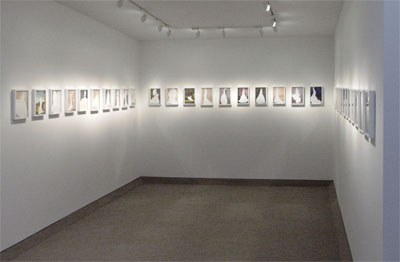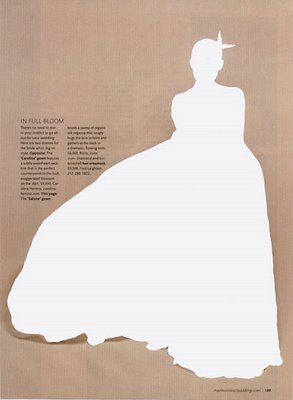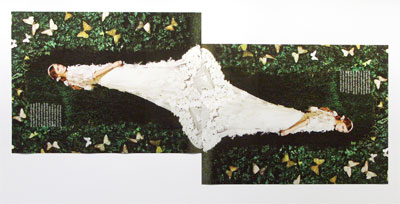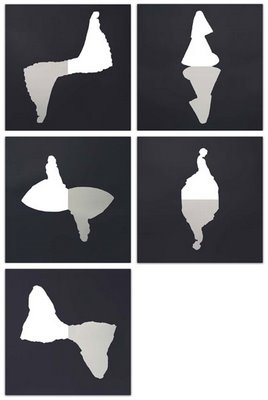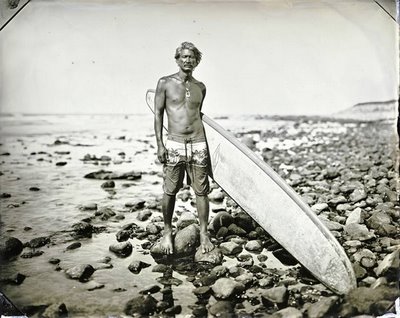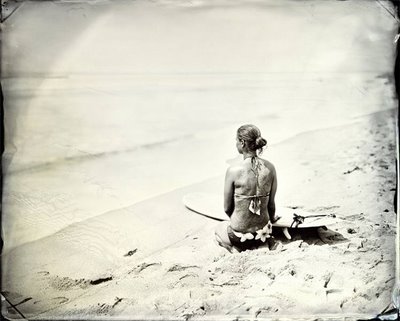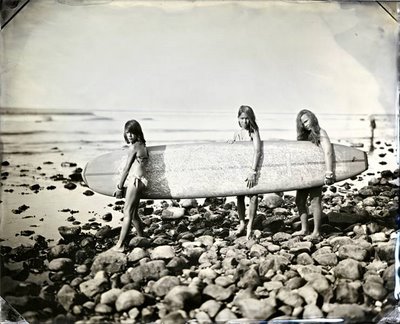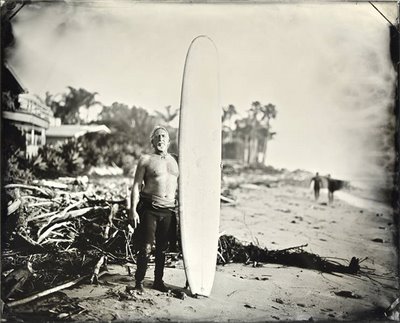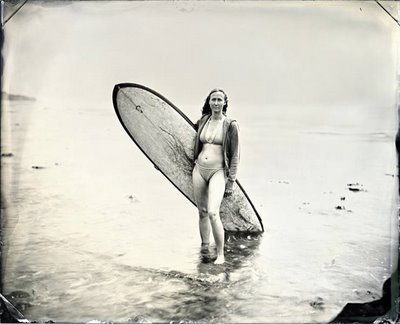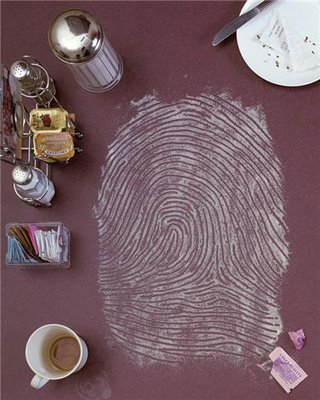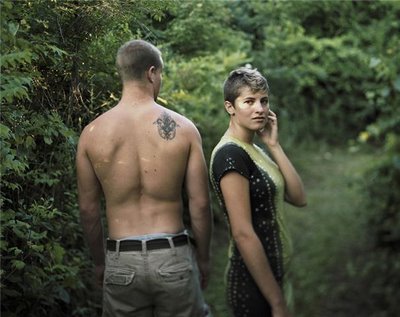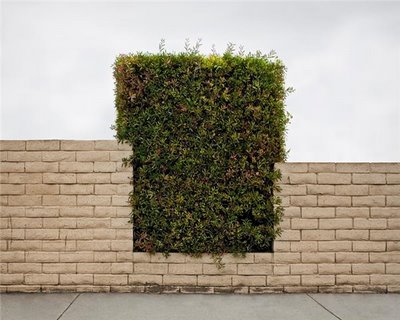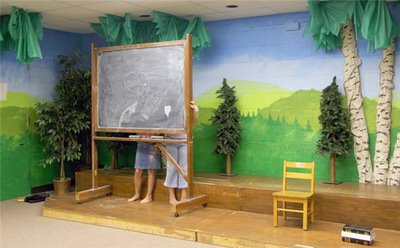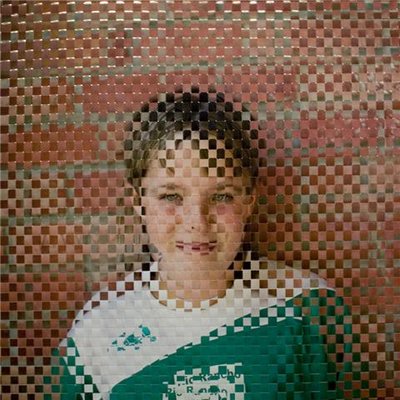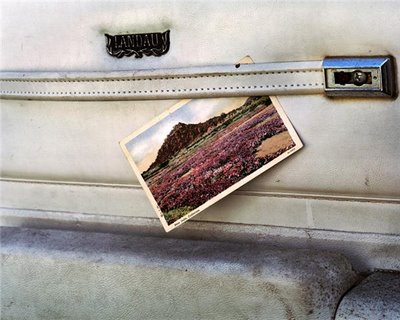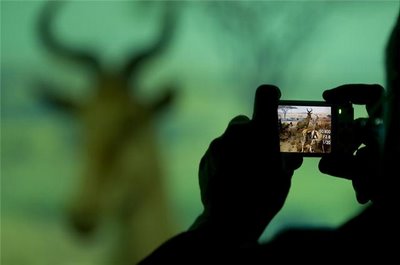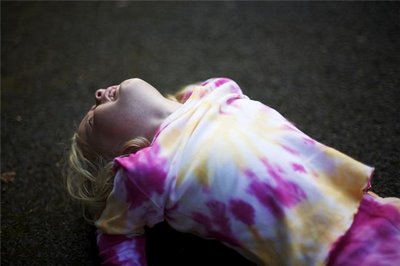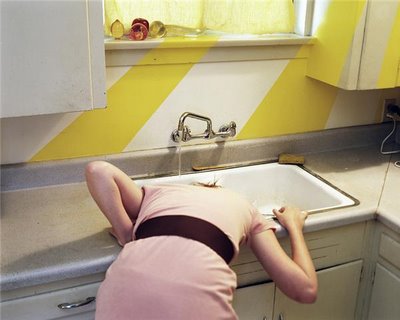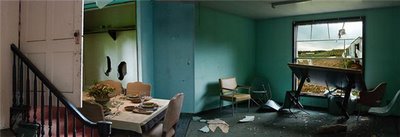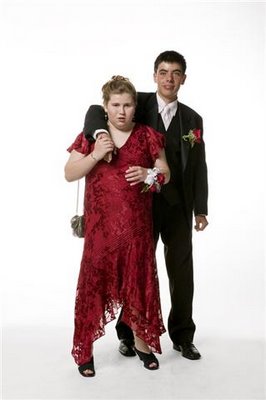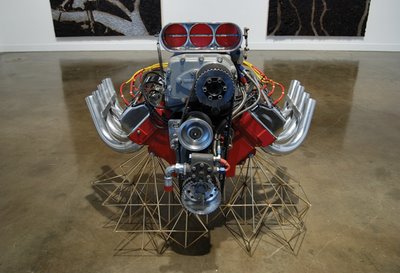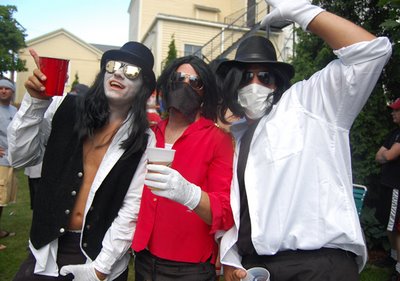Kelly Sherman
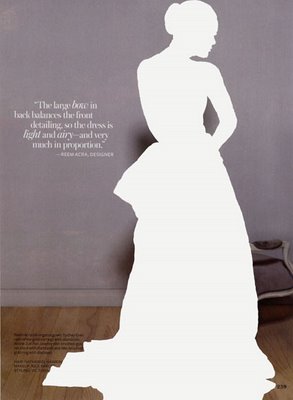
Boston conceptual artist Kelly Sherman continues to plumb the disconnect between our consumerist culture and our craving for human connection in her new show “Success & Happiness” at Boston’s Barbara Krakow Gallery.
Sherman won the Boston Institute of Contemporary Art’s $25,000 Foster Prize in 2007 for her exhibit at the museum featuring floor charts documenting the changing arrangements of her family’s home as her parents went through a divorce and print-outs of anonymous wish lists culled from the Internet. In the wish lists, Susan wants “a grave to put my father to rest (for my father),” while Virginia hopes to “remodel my house” and “find my father." Sherman seemed to be looking at how we hope our stuff will help us make connections – though it may often just signify the distance between us.
Advertisements for wedding gowns are the central focus of “Success & Happiness.” “Brides Horizontal,” 2009, is a magazine bridal spread reproduced twice, joined foot to foot and turned sideways, to create an image more than 12 feet wide. It shows a woman in a long, lacy white bridal coat standing looking over her shoulder under a hedge arch decorated with butterflies. Elsewhere Sherman uses white enamel to paint out dozens of images of brides cut out from wedding and fashion magazines. “There’s no need to rein in your instinct to go all out for your wedding,” one advertisement cajoles.
Sherman’s ICA show was rigorously devoid of visual and sensual allure as she addressed emotional subjects via detached data processing that kept deep feelings at a (safe?) distance. This show is rife with allure. It comes from the appropriated original images, which start out dazzlingly sexy. But Sherman cools things down with her conceptual approach. Her primary action is changing the context of the originals via anthropological cataloguing – plus a little painting.
Bridal imagery can churn up thoughts of love, marriage and the wedding-industrial complex. It can get you thinking about the anxiety generated by consumerist culture. At our acquisitive society’s heart is a question: Will buying this thing make me happy? Will buying this thing make me attractive? Will money buy me love? For how long?
Sherman mulls a particular lady version of this: the wedding racket, with its Cinderella dreams and aspirations. A (straight) guy version might be beer commercials that suggest that if you drink the right beverage busty blondes will throw themselves at you. It’s a powerful subject – but it floats around Sherman's art rather than in it.
Ultimately Sherman is riffing around the imagery of brides, tossing them out like lures, hoping they'll hook big concepts. “Brides 1-5,” 2007, are woodcuts in white, gray and black of mirrored silhouettes of people in wedding gowns. This duplication unmoors the silhouettes from their origins. And they lose their meaning too, becoming simply curious shapes. They resemble maps of Africa or South America. Or maybe they’re wedding-themed Rorschach ink blots for us to project onto. This art doesn’t so much embody ideas, as wave hopefully in their direction.
Kelly Sherman, “Success & Happiness,” Barbara Krakow Gallery, 10 Newbury St., Boston, May 30 to July 3, 2009.
Previously:
Feb. 12, 2007: Sherman wins ICA’s Foster Prize.
March 7, 2007: ICA Foster Prize exhibit.
See also: At “The Hub Review,” Thomas Garvey criticizes Sherman’s use of appropriation in his post “The plagiarist generation.”
Pictured from top to bottom: Kelly Sherman, “Bride 38,” 2009; installation view of “Brides,” 2009; “Bride 8,” 2009; “Brides Horizontal,” 2009; and “Brides 1-5,” 2007.
